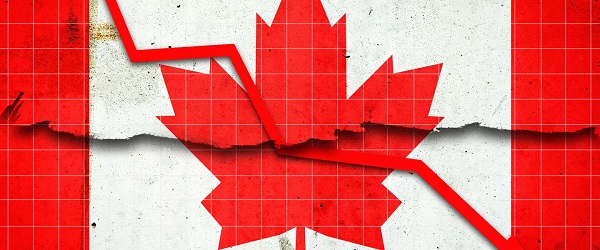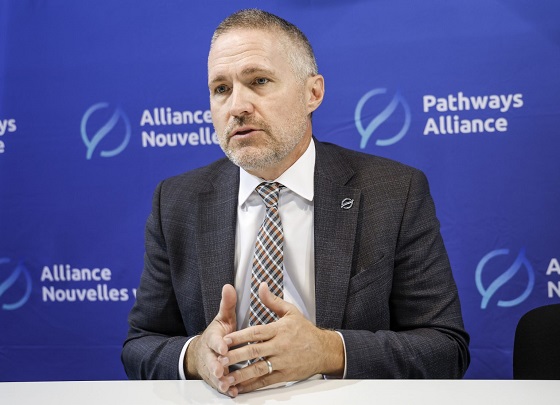Business
Fiscal update reveals extent of federal government mismanagement

From the Fraser Institute
By Jake Fuss and Grady Munro
Following the sudden departure of Chrystia Freeland as finance minister, the Trudeau government released its 2024 fall fiscal update on Monday. Unsurprisingly, spending is up, the deficit has ballooned even higher, and the Trudeau government continues to utterly mismanage Canada’s finances.
Let’s get into the numbers.
For the current fiscal year (2024-25), the update estimates the federal government will spend $543.4 billion while taking in $495.2 billion in revenues. This means the government plans to run a $48.3 billion deficit—$8.5 billion higher than the $39.8 billion deficit that had originally been planned just eight months ago.
The Trudeau government’s incessant need to introduce new spending at every turn has driven this increase in borrowing. Indeed, discretionary spending on programs is now expected to be $6.1 billion higher than initially projected in this year’s budget tabled in April. Revenues have also taken a hit compared to projections from the spring, primarily from the federal government’s new GST holiday.
Not only will the government run a larger deficit this year, but future deficits are also expected to rise. Cumulative deficits from 2025-26 to 2028-29 are now expected to be $14.9 billion higher than projected in the spring budget.
There are costs associated with running deficits and accumulating debt, and Canadians ultimately bear these costs. Just like anyone who takes out a loan at a bank, government must pay interest on the money it borrows. In the case of the federal government, these interest costs will reach an estimated $53.7 billion in 2024-25 alone—more than all revenue collected via the federal GST. In other words, every dollar that Canadians are expected to pay in GST this year will go towards federal debt interest, as opposed to any services or programs. And as the federal government continues to borrow more, all else equal, these interest costs will continue to rise.
While the updated deficits for 2024-25 and beyond are still estimates, the 2024 FES presents what’s likely the final deficit number for the 2023-24 fiscal year. In a remarkable display of fiscal mismanagement, the Trudeau government ran a $61.9 billion deficit last year—$21.9 billion higher than the $40.0 billion deficit projected in the budget.
This means the federal government has broken one of its fiscal rules (a.k.a. guardrails) that help guide policy on spending, taxes and borrowing. One year ago, the Trudeau government established three fiscal rules—including to keep the 2023-24 deficit at or below $40.1 billion. These rules were reaffirmed in the spring budget, and have been a key feature of the Trudeau government’s so-called “responsible economic plan.”
However, there’s nothing responsible about establishing a rule only to break it a year later. Unfortunately, the Trudeau government has made a habit breaking its self-imposed rules. In 2015, the government established its first fiscal rule—balancing the budget by fiscal year 2019-20. But it quickly abandoned this rule in subsequent months and proposed an alternative rule—to reduce federal debt relative to the size of the economy (GDP). But again, this rule became an afterthought, as federal debt increased relative to GDP in 2019-20 and continued to sharply increase during the pandemic and has yet to return to anywhere near pre-COVID levels.
As has happened consistently in the past decade, this year’s fall update reveals that spending and deficits are up compared to the budget plan the government presented just months ago. The Trudeau government is utterly mismanaging the Canada’s finances, which has caused turmoil inside the government while Canadians bear the consequences.
Business
Residents in economically free states reap the rewards

From the Fraser Institute
A report published by the Fraser Institute reaffirms just how much more economically free some states are compared with others. These are places where citizens are allowed to make more of their economic choices. Their taxes are lighter, and their regulatory burdens are easier. The benefits for workers, consumers and businesses have been clear for a long time.
There’s another group of states to watch: “movers” that have become much freer in recent decades. These are states that may not be the freest, but they have been cutting taxes and red tape enough to make a big difference.
How do they fare?
I recently explored this question using 22 years of data from the same Economic Freedom of North America index. The index uses 10 variables encompassing government spending, taxation and labour regulation to assess the degree of economic freedom in each of the 50 states.
Some states, such as New Hampshire, have long topped the list. It’s been in the top five for three decades. With little room to grow, the Granite State’s level of economic freedom hasn’t budged much lately. Others, such as Alaska, have significantly improved economic freedom over the last two decades. Because it started so low, it remains relatively unfree at 43rd out of 50.
Three states—North Carolina, North Dakota and Idaho—have managed to markedly increase and rank highly on economic freedom.
In 2000, North Carolina was the 19th most economically free state in the union. Though its labour market was relatively unhindered by the state’s government, its top marginal income tax rate was America’s ninth-highest, and it spent more money than most states.
From 2013 to 2022, North Carolina reduced its top marginal income tax rate from 7.75 per cent to 4.99 per cent, reduced government employment and allowed the minimum wage to fall relative to per-capita income. By 2022, it had the second-freest labour market in the country and was ninth in overall economic freedom.
North Dakota took a similar path, reducing its 5.54 per cent top income tax rate to 2.9 per cent, scaling back government employment, and lowering its minimum wage to better reflect local incomes. It went from the 27th most economically free state in the union in 2000 to the 10th freest by 2022.
Idaho saw the most significant improvement. The Gem State has steadily improved spending, taxing and labour market freedom, allowing it to rise from the 28th most economically free state in 2000 to the eighth freest in 2022.
We can contrast these three states with a group that has achieved equal and opposite distinction: California, Delaware, New Jersey and Maryland have managed to decrease economic freedom and end up among the least free overall.
What was the result?
The economies of the three liberating states have enjoyed almost twice as much economic growth. Controlling for inflation, North Carolina, North Dakota and Idaho grew an average of 41 per cent since 2010. The four repressors grew by just 24 per cent.
Among liberators, statewide personal income grew 47 per cent from 2010 to 2022. Among repressors, it grew just 26 per cent.
In fact, when it comes to income growth per person, increases in economic freedom seem to matter even more than a state’s overall, long-term level of freedom. Meanwhile, when it comes to population growth, placing highly over longer periods of time matters more.
The liberators are not unique. There’s now a large body of international evidence documenting the freedom-prosperity connection. At the state level, high and growing levels of economic freedom go hand-in-hand with higher levels of income, entrepreneurship, in-migration and income mobility. In economically free states, incomes tend to grow faster at the top and bottom of the income ladder.
These states suffer less poverty, homelessness and food insecurity and may even have marginally happier, more philanthropic and more tolerant populations.
In short, liberation works. Repression doesn’t.
Business
Some Of The Wackiest Things Featured In Rand Paul’s New Report Alleging $1,639,135,969,608 In Gov’t Waste


From the Daily Caller News Foundation
Republican Kentucky Sen. Rand Paul released the latest edition of his annual “Festivus” report Tuesday detailing over $1 trillion in alleged wasteful spending in the U.S. government throughout 2025.
The newly released report found an estimated $1,639,135,969,608 total in government waste over the past year. Paul, a prominent fiscal hawk who serves as the chairman of the Senate Homeland Security and Governmental Affairs Committee, said in a statement that “no matter how much taxpayer money Washington burns through, politicians can’t help but demand more.”
“Fiscal responsibility may not be the most crowded road, but it’s one I’ve walked year after year — and this holiday season will be no different,” Paul continued. “So, before we get to the Feats of Strength, it’s time for my Airing of (Spending) Grievances.”
Dear Readers:
As a nonprofit, we are dependent on the generosity of our readers.
Please consider making a small donation of any amount here.
Thank you!
The 2025 “Festivus” report highlighted a spate of instances of wasteful spending from the federal government, including the Department of Health and Human Services (HHS) spent $1.5 million on an “innovative multilevel strategy” to reduce drug use in “Latinx” communities through celebrity influencer campaigns, and also dished out $1.9 million on a “hybrid mobile phone family intervention” aiming to reduce childhood obesity among Latino families living in Los Angeles County.
The report also mentions that HHS spent more than $40 million on influencers to promote getting vaccinated against COVID-19 for racial and ethnic minority groups.
The State Department doled out $244,252 to Stand for Peace in Islamabad to produce a television cartoon series that teaches children in Pakistan how to combat climate change and also spent $1.5 million to promote American films, television shows and video games abroad, according to the report.
The Department of Veterans Affairs (VA) spent more than $1,079,360 teaching teenage ferrets to binge drink alcohol this year, according to Paul’s report.
The report found that the National Science Foundation (NSF) shelled out $497,200 on a “Video Game Challenge” for kids. The NSF and other federal agencies also paid $14,643,280 to make monkeys play a video game in the style of the “Price Is Right,” the report states.
Paul’s 2024 “Festivus” report similarly featured several instances of wasteful federal government spending, such as a Las Vegas pickleball complex and a cabaret show on ice.
The Trump administration has been attempting to uproot wasteful government spending and reduce the federal workforce this year. The administration’s cuts have shrunk the federal workforce to the smallest level in more than a decade, according to recent economic data.
Festivus is a humorous holiday observed annually on Dec. 23, dating back to a popular 1997 episode of the sitcom “Seinfeld.” Observance of the holiday notably includes an “airing of grievances,” per the “Seinfeld” episode of its origin.
-

 armed forces1 day ago
armed forces1 day agoRemembering Afghanistan and the sacrifices of our military families
-

 Opinion1 day ago
Opinion1 day agoPope Leo XIV’s Christmas night homily
-

 Fraser Institute1 day ago
Fraser Institute1 day agoHow to talk about housing at the holiday dinner table
-

 Frontier Centre for Public Policy1 day ago
Frontier Centre for Public Policy1 day agoTent Cities Were Rare Five Years Ago. Now They’re Everywhere
-

 Fraser Institute12 hours ago
Fraser Institute12 hours agoCarney government sowing seeds for corruption in Ottawa
-

 Alberta12 hours ago
Alberta12 hours agoAlberta Next Panel calls for less Ottawa—and it could pay off
-

 Alberta3 hours ago
Alberta3 hours agoAlberta project would be “the biggest carbon capture and storage project in the world”
-

 Energy11 hours ago
Energy11 hours agoWhile Western Nations Cling to Energy Transition, Pragmatic Nations Produce Energy and Wealth











